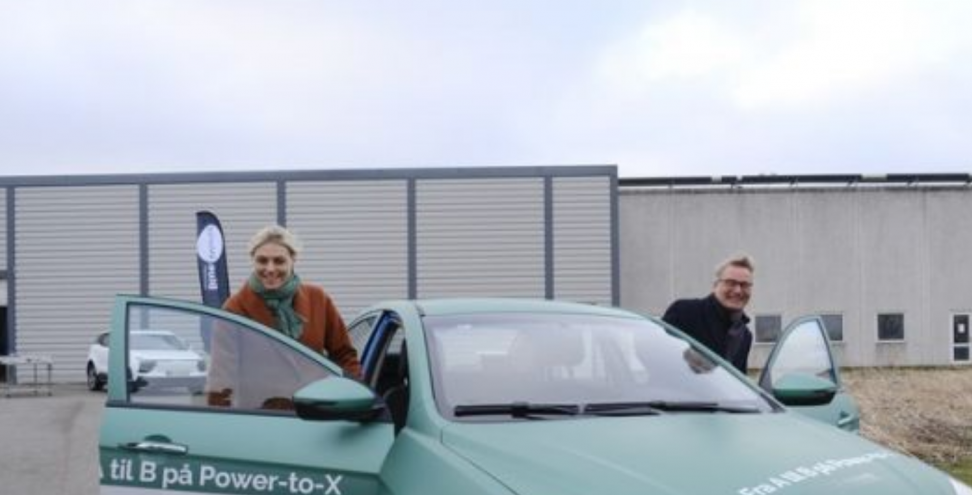In March this year, two cars and a heavy truck of China’s Zhejiang Geely Holding Group successfully hit the road in the port of Aalborg
in northwest Denmark using green electrolytic methanol fuel produced by the “electricity multi-conversion” technology.
What is “electric power multi-conversion”? “Power-to-X” (PtX for short) refers to the generation of hydrogen energy by electrolysis of
renewable energy sources such as wind energy and solar energy, which are difficult to store, and then converted into hydrogen energy
with higher unit energy efficiency. And green methanol that is easier to store and transport.
Danish Minister of Transport Bramson participated in the test ride of Geely’s methanol fuel vehicles on the same day, and called on
all parties to give more support to the innovation and development of renewable energy technologies including PtX. Bramson said
that the development of renewable energy is not a matter of one country, but the future of the entire world, so “it is crucial that we
cooperate and share more in this field, which is related to the well-being of future generations”.
The Danish Parliament officially included PtX in the national development strategy in March this year, and allocated 1.25 billion
Danish kroner (about 1.18 billion yuan) for this purpose to accelerate the process of PtX and provide green fuel for domestic and
foreign air, sea and land transportation .
Denmark has significant advantages in developing PtX. First, abundant wind resources and the massive expansion of offshore wind
power in the next few years have created favorable conditions for the production of green fuels in Denmark.
Secondly, the PtX industry chain is huge, including for example wind turbine manufacturers, electrolysis plants, hydrogen infrastructure
suppliers and so on. The Danish local companies already occupy an important position in the entire value chain. There are about 70
companies in Denmark that are engaged in PtX-related work, involving project development, research, consulting, as well as equipment
production, operation and maintenance. After years of development in the field of wind energy and green energy, these companies have
a relatively mature operation mode.
In addition, the favorable conditions and environment for research and development in Denmark have paved the way for the introduction
of innovative solutions to the commercial market.
Based on the above development advantages and the great emission reduction effect of PtX, Denmark has included the development of
PtX into its national development strategy in 2021, and released the “Power-to-X Development Strategy for Diversified Electricity Conversion”.
The strategy clarifies the basic principles and roadmap for the development of PtX: First, it must contribute to the emission reduction targets
set in Denmark’s “Climate Act”, that is, to reduce greenhouse gas emissions by 70% by 2030 and achieve climate neutrality by 2050. Second,
the regulatory framework and facilities must be in place to take full advantage of the country’s advantages and ensure the long-term operation
of PtX-related industries under market conditions. The government will launch an all-round review related to hydrogen, create national hydrogen
market regulations, and will also analyze the role and tasks played by Danish ports as green transportation hubs; the third is to improve the
integration of the domestic energy system with PtX; the fourth is to improve Denmark Export competitiveness of PtX products and technologies.
This strategy shows the determination of the Danish government to vigorously develop PtX, not only to further expand the scale and increase
technology development to realize the industrialization of PtX, but also to introduce corresponding laws and regulations to provide policy support.
In addition, in order to enhance and develop investment in PtX, the Danish government will also create financing opportunities for major
demonstration projects such as the PtX plant, build hydrogen infrastructure in Denmark, and eventually export hydrogen energy to other
European countries.
Post time: Sep-20-2022

